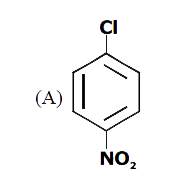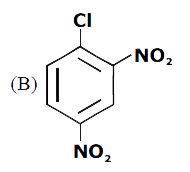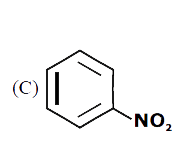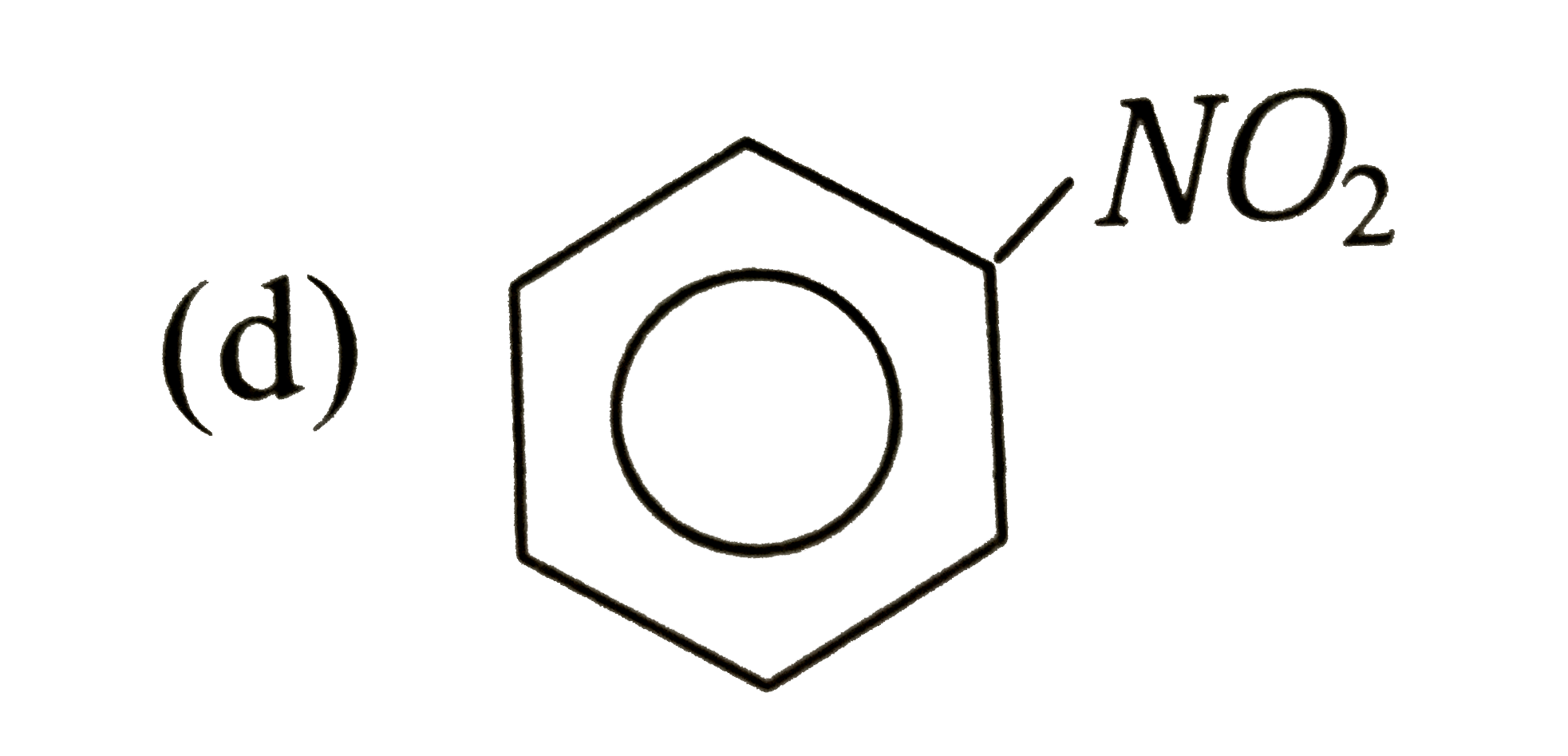Which of the following is the most reactive towards attack by an electrophile ?

Video Solution
Text Solution
An electrophile will always prefer to attack centres of high electron density in the ring. Both nitro (−NO2) and chloro (−Cl) groups are electron withdrawing groups. In benzyl alcohol (III), the OH group is not directly attached to the ring and is not in a position to activate it. Phenol (I) is the most reactive because phenolic group activates the ring towards electrophilic attack both at the ortho and para positions. For more details, consult section 16 (Chemical properties of phenols).
|
Updated on:21/07/2023
Topper's Solved these Questions
- BOOK - DINESH PUBLICATIONCHAPTER - ALCOHOLS AND PHENOLSEXERCISE - QUESTION FROM BOARD EXAMINATION77videos
ALCOHOLS AND PHENOLS
- BOOK - DINESH PUBLICATIONCHAPTER - ALCOHOLS AND PHENOLSEXERCISE - HIGHER ORDER THINKING SKILLS8videos
ALCOHOLS AND PHENOLS
- BOOK - DINESH PUBLICATIONCHAPTER - ALCOHOLS AND PHENOLSEXERCISE - NCERT Exercise23videos
ALCOHOLS AND PHENOLS
- BOOK - DINESH PUBLICATIONCHAPTER - ALDEHYDES AND KETONES EXERCISE - Interger5videos
ALDEHYDES AND KETONES
Similar Questions
Knowledge Check
- Question 1 - Select One
Which of the following is most reactive toward SNAr :
A B
B C
C D
D
- Question 2 - Select One
Which one of the following is the most reactive towards electrophilic attack?
A B
B C
C D
D
- Question 3 - Select One
Which of the following is most reactive towards aqueous HBr?
A1-phenyl-1-propanolB1-Phenyl-2-propanolC3-Phenylo-1-propanolDAll are equally reactive
Which of the following is most reactive towards aqueous HBr?
View SolutionWhich of the following is the most reactive towards electrophilic attack ?
View SolutionWhich one of the following is the most reactive towards electrophilic attack?
View SolutionWhich one of the followingis the most reactive towards electrophilic attack?
View SolutionWhich of the following is most reactive towards aqueous HBr?
View Solution

